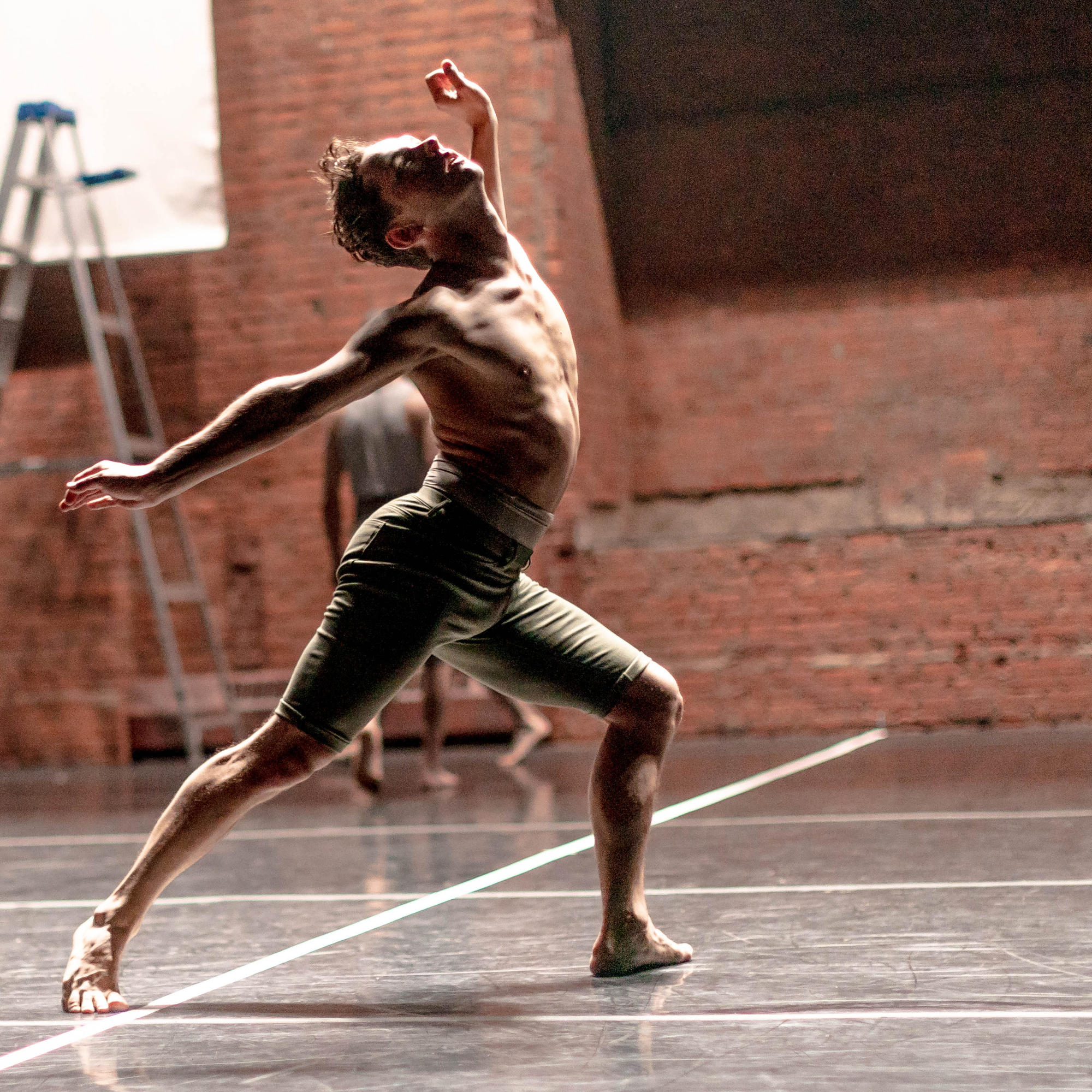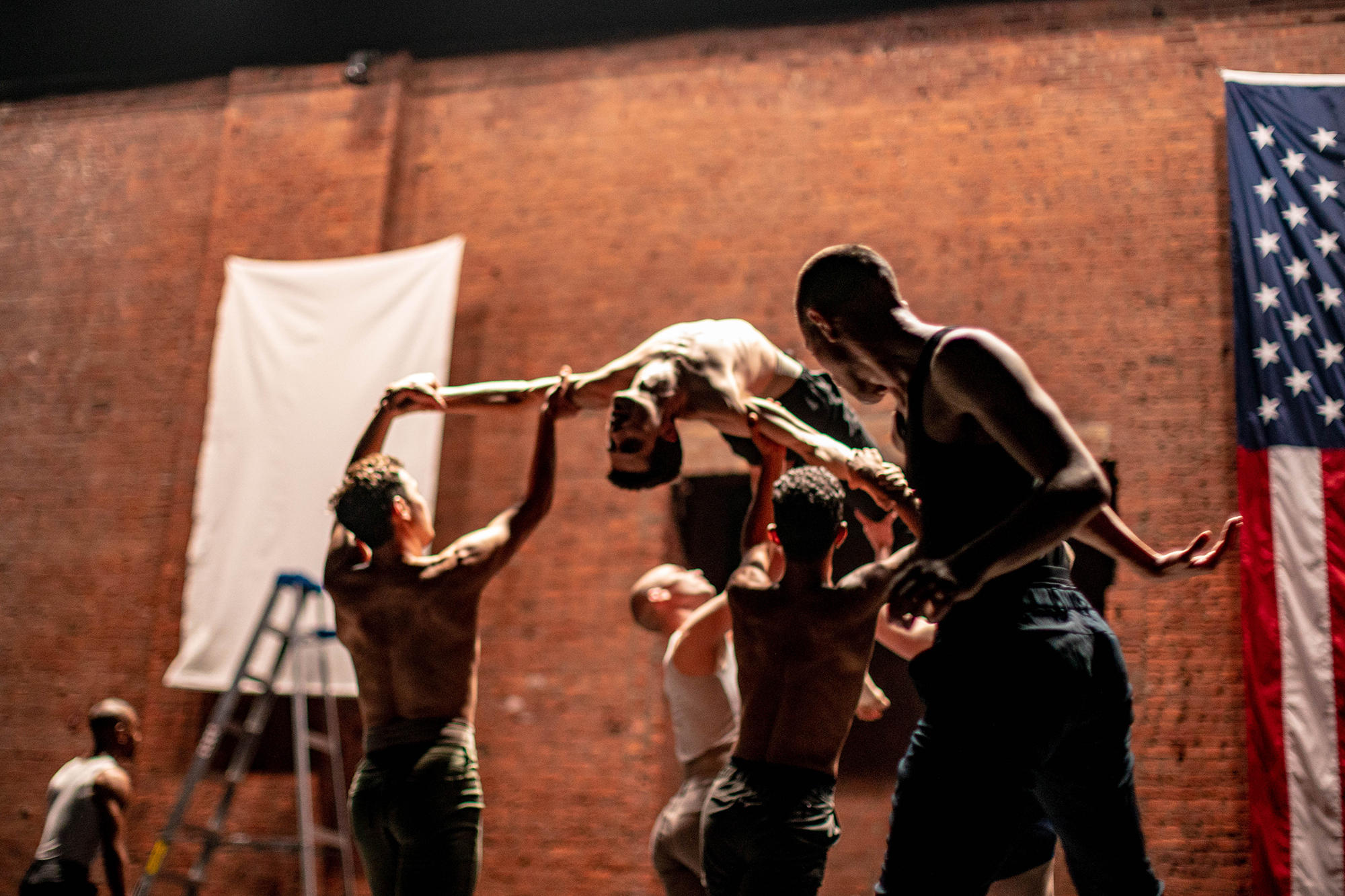 Madboots Dance was founded as a queer, contemporary dance company in New York City. Today, its founders use dance to engage in conversations about male identity, queerness, male intimacy and relationships.
Madboots Dance was founded as a queer, contemporary dance company in New York City. Today, its founders use dance to engage in conversations about male identity, queerness, male intimacy and relationships.
By Annie Harrigan ‘22
Dancers Jonathan Campbell and Austin Diaz met while working for another choreographer. After recognizing that they have, what they call, a natural chemistry, Campbell and Diaz began working with one another in a dance studio space and choreographed their own duet together. While they may not have initially set out to co-found a dance company, the two found that this duet was an outlet for them to express their shared ideas. It was after performing this piece at several festivals that Campbell and Diaz realized that although there were a few all male dance groups and companies, many of them did not explore male intimacy nor focused on expressions of male identity in the ways that they wanted to see. It was this realization that led to the creation of Madboots Dance in 2011.
During their upcoming visit to Harvard, the pair will attend two TDM courses ("Queer Cabaret” and “Deconstructing the Novel for Choregraphic Thinking”), teach a master class on Nov. 5 (observers welcome) at the Harvard Dance Center and partner with the Office of BGLTQ Student Life and OSAPR for an undergraduate dinner on Nov. 6 with conversation focused on the topics of consent, male identity, queerness and intimacy. I spoke to Campbell and Diaz about their history with Madboots, their work and what they look forward to most about their visit to Harvard.
What were some of the biggest unexpected lessons that you have learned from working at Madboots, either from each other, from performances, or from people that you have worked with?
Campbell: The thing that we take away after performances and things like that, what we get is that people can reflect themselves in the work — even people that aren’t queer — and can see the humanity that we are trying to highlight. I think that was surprising once that kind of response kept happening.
Diaz: It was kind of a shared experience. Even my brothers were relating deeply to the work and that’s something that I had never expected to come to share with them because we had very different experiences.  Campbell: One of the most rewarding experiences after shows and events is that we get emails and have face-to-face conversations with older, gay gentlemen who say that they feel very appreciative and wish that, in their youth, that they had been able to be as expressive and open and vulnerable as we, I guess, portray or put on the stage. To hear that that touched them in that way has been really gratifying. I think we also reflect that back to how we wouldn’t be doing what we’re doing had it not been for the artists and people who have come before us who have pioneered and made a stance and showed themselves. It’s this beautiful thing when we talk to these older people who come and see the work.
Campbell: One of the most rewarding experiences after shows and events is that we get emails and have face-to-face conversations with older, gay gentlemen who say that they feel very appreciative and wish that, in their youth, that they had been able to be as expressive and open and vulnerable as we, I guess, portray or put on the stage. To hear that that touched them in that way has been really gratifying. I think we also reflect that back to how we wouldn’t be doing what we’re doing had it not been for the artists and people who have come before us who have pioneered and made a stance and showed themselves. It’s this beautiful thing when we talk to these older people who come and see the work.
What are you looking forward to most about at Harvard, and what do you hope that Harvard students can take away from the discussions on Madboots, male identity and queerness?
Campbell: Other than working with the community in the dance workshop, we are going to be visiting two classes as well as participating in a dinner discussion where we will be talking about boundaries, queerness, expression, consent and male relationships. It’s the first kind of round table situation where we will be able to sit down with a group of people and just share dialogue. Of course we love dance, but to just be in conversation with people is what we are really excited about.
Diaz: Positive male relationships that exist in the world – we collaborate together everyday – and this idea of male intimacy and male partnership is a large topic of discussion so being able to shed some light on our own experiences.
If Harvard students who attend the discussion were to take away just one thing from the conversation, what do you want that one thing to be?
Campbell: For me, going back to this idea of male partnership in an intimate way and an artistic way and a collaborative way, I think showing that, that exists and that it’s healthy.
Diaz: The beauty in taking that away and being very honest with each other and not letting societal pressures affect these relationships that we have in the world. Just purely being yourself and owning that is the thing that we would hope they can take away. It has been a challenge for us to shed those layers and we try to everyday in the studio to shed those layers and be very open with each other. I think that creates a beautiful dialogue that is resonant in our work.